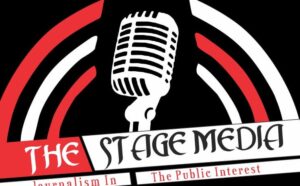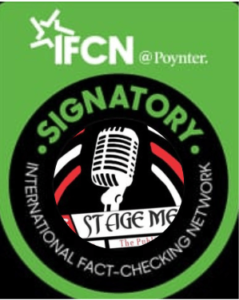
President George Manneh Weah, in his sixth State of Annual Address for his first term, made these claims about inflation and the economy:
- Today, Liberia is a macroeconomic exception in the West African region.
- We have brought inflation down from a high of thirty (30%) percent to a single-digit rate now under seven (7%) percent. We accomplished this in just under two years, making it one of the fastest rates of inflation collapse recorded.
- Inflation in End-December 2022 was 6.9% percent, and the exchange rate between the Liberian dollar and the United States Dollar has remained stable within the range of 150 – 153 for the past twelve (12) months.
We verify these statements in sections.
- Macroeconomic Exception in the West African
The Weah administration took office in 2018 following the end of the economist Ellen Johnson Sirleaf regime.
Macroeconomics is the growth, inflation, employment, fiscal situation, and external debts.
Growth rates differ considerably over time and across West African countries.
The West Africa Economic Outlook 2019 states that Liberia and Sierra Leone recovered from the Ebola outbreak, which caused their economies to contract in 2014–16.
“Since then, growth in Liberia has accelerated to 2.5 percent in 2017 and an estimated 3.2 percent in 2018. Sierra Leone has followed the same pattern, despite flooding in 2018. Growth rates in both countries are projected to return to pre-outbreak levels in 2019 and 2020.”
The World Bank projected Economic growth in Sub-Saharan Africa (SSA) to slow from 4.1% in 2021 to 3.3% in 2022, owing to a slowdown in global growth, rising inflation exacerbated by the Ukraine war, adverse weather conditions, a tightening of global financial conditions, and an increase in the risk of debt distress.
Though the Liberian economy recovered in 2021 from COVID-19, GDP is estimated to have recovered by 3.3% from a decline of 3.0% in 2020.
Conclusion: According to the Macroeconomic performance and prospects 2019 report, Liberia had a floating or managed float system from 2008 and 2018.
Furthermore, the IMF stated that, despite delays in the broad-based reform plan, Liberian authorities are continuing to implement prudent macroeconomic policies.
“In general, the authorities kept the program on track by ensuring macroeconomic stability, a comfortable international reserve position, and debt sustainability.”
There is no reason to believe Liberia is a West African macroeconomic outlier.
2. INFLATION
We have brought inflation down from a high of thirty (30%) percent to a single-digit rate that is now under seven (7%) percent. We accomplished this in just under two years, making it one of the fastest rates of inflation collapse in recorded economic history.
2a. We have brought inflation down from a high of thirty (30%) percent to under seven (7%) percent.
Before the election of President Weah, the inflation rate was 13.9 percent in January 2018, but it has since risen to 31.3 percent in August 2019.
Then the Liberian Central Bank shifted from its former monetary policy framework to the current monetary targeting framework.
Since its implementation, the present framework has demonstrated considerable effectiveness in combating inflation, as seen by a large drop in inflation from the high double digits to the single digits (from 30.55 percent in October 2019 to 5.46 percent in December 2021).
Despite this gain, the domestic economy remains vulnerable to shocks that significantly influence the conduct of monetary policy, said in the West African Financial and Economic Review, June 2022 edition.
In its country economic assessments for 2022, the IMF praised the Liberian government for its challenging and effective governance initiatives and policies that have maintained mainly macroeconomic stability.
“Lowering inflation within single digits and maintaining a positive real GDP growth of 3.7% despite the enormous economic challenges facing the world at the time, such as COVID and the ongoing conflict in Ukraine.
The CBL Harmonized Consumer Price Index (HCPI), a composite of the Classification of Individual Consumption by Purpose (COICOP), forecasts 6-9 percent inflation in 2022 from January to December.
While the IMF places the Annual Percent Inflation rate, average consumer prices to 8.7 in 2022.
On his social media page, former Minister of Finance Amara Konneh commended the government for improving the macroeconomic situation but said, “The government needs to do more to combat food inflation.”
Conclusion: True, inflation has dropped to a single digit in the last two years, but given the disparities in percentages from the World Bank, CBL, and IMF, it is safe to say that even though inflation has dropped, we have yet to see inflation fall below 7%.
2b. fastest rates of inflation collapse in recorded economic history
From 2020 to 2022, we compare inflation rates in Liberia 9.9 to neighboring countries such as Ghana, Cote D’ Ivoire, Sierra Leone, Guinea, and Nigeria.
| Countries | 2020 | 2021 | 2022 |
| Liberia | 27 | 17 | 8.7 |
| Ghana | 9.9 | 10 | 20.9 |
| Cote D’ Ivoire | 2.4 | 4.2 | 4 |
| Sierra Leone | 11.5 | 25.9 | 26.8 |
| Guinea | 12.6 | 12.7 | 12.2 |
| Nigeria | 17 | 18.9 | 17.3 |
According to the World Bank, global headwinds are hurting Africa’s economic growth as countries grapple with growing prices, impeding progress toward poverty reduction.
Meanwhile, the IMF said despite Liberia’s growth in 2022, the impending political cycle, which includes presidential and parliamentary elections in October 2023, is another source of concern.
The international body recommends Liberia fully implement initiatives to enhance the business climate and increase credit availability, notably by expediting the resolution of non-performing loans. Improving educational attainment, tackling gender inequities, and adjusting to climate change is also crucial.
Conclusion
There is no evidence that Liberia has seen the fastest rate of inflation drop in recorded economic history.
3. Inflation at End-December 2022 was 6.9% percent
False; according to the IMF for 2022, Liberia’s inflation rate is 8.7 percent, whereas AFDB puts it at 9.8 percent. Because the Liberia Financial Statistics (LFS) is a bi-monthly database published by the CBL, the CBL has not reported for December 2022.
3a. The exchange rate between the Liberian dollar and the United States Dollar has remained stable within the range of 150 – 153 for the past twelve (12) months.
No, the rate has been between 144.9386 – 157.94 for buying and selling, according to CBL.







